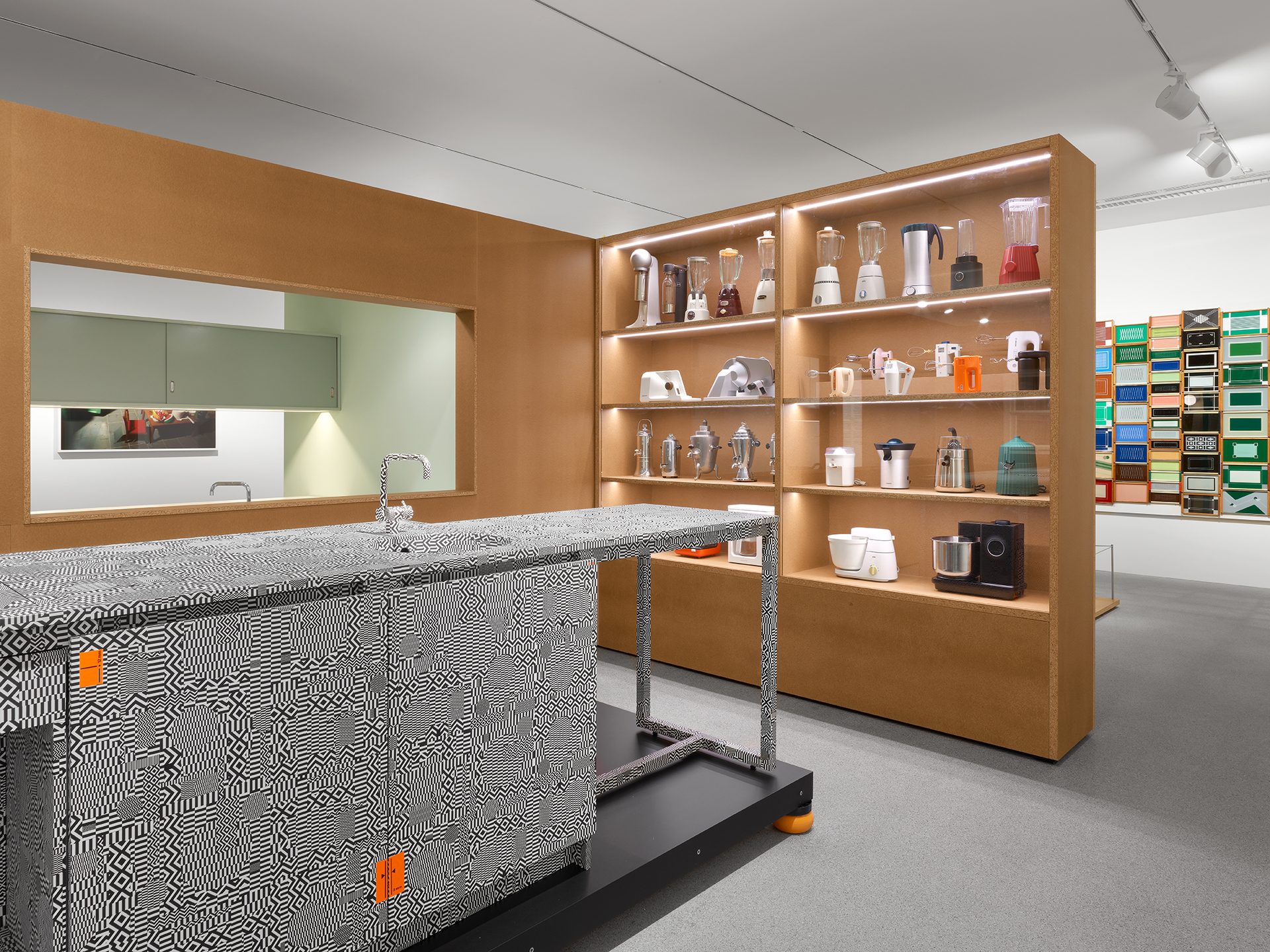Kitchen Culture
About the exhibition
Kitchen culture has changed a lot
in the last 100 years:
from the first fitted kitchen to
completely customised kitchens.
During this time, designers and architects
have constantly developed new ideas for modern kitchens.
They always paid attention to technical and social changes.
Kitchens are very different:
They can be simple and small,
or they can be important rooms in the home.
In the kitchen, you sit together and chat.
At the beginning of the exhibition,
you will see the Frankfurt Kitchen from the year 1926.
Margarete Schütte-Lihotzky has developed
this kitchen for working women.
It is the first fitted kitchen.
The kitchen is designed to make housework easier for
the women because they had to walk less.
The Frankfurt Kitchen was installed in
around 10,000 apartments.
After the Second World War, there was functionalism.
This is a style of architecture.
Everything was designed to be functional and useful.
In functionalist houses, kitchens were particularly important.
In the exhibition, you will see these famous examples:
• The kitchen unit in the apartment tower block
Unité d’habitation in the city of Marseille in France.
Unité d’habitation is pronounced like this:
Ioo-nee-tay d-abi-ta-syo.
This is French and means: united living unit.
The architect Le Corbusier has designed this building
together with Charlotte Perriand and André Wogenscky.
In the years from 1946 to 1952, these kitchen units
were installed in around 330 small apartments in France.
• A kitchen unit by Arne Jacobsen.
He was an architect and designer from Denmark.
He wanted the kitchen to be the centre of single-family houses.
In 1957, he presented this exact kitchen unit at
the International Building Exhibition in Berlin.
• The kitchen units Eschebach K21 from 1956.
They were made by VEB Küchen-Möbel in the city of Radeberg.
VEB means Volks-Eigener Betrieb in German.
In English, this means people-owned enterprise.
This kitchen furniture was very popular in
East Germany and the Soviet Union.
It came in many different colours and
you could use it in many different ways.
The design office OHA in Munich
designed the architecture for this exhibition.
OHA stands for: Office Heinzelmann Ajadi.
OHA has chosen particle board for the exhibition.
This is the material used for almost all modern fitted kitchens
that are produced in large numbers.
OHA’s architecture allows us
to see the history and the future of kitchens.
Plan a visit
Where?
-
Barer Straße 40, 80333 Munich
Open:
-
Daily 10:00 – 18:00
-
Monday closed
-
Thursday 10:00 – 20:00






FAQs
A visit to the Pinakothek der Moderne costs
regular 10 Euro
reduced admission 7 Euro
Sunday admission 1 Euro
Children and young people under the age of 18 have free admission.
We cooperate with Kulturraum München.
You can buy a ticket at the ticket office on site or online. You can find more information on the Pinakothek der Moderne website.
You can find an overview of accessibility at the Pinakothek der Moderne on the Kultur barrierefrei München website.
The design museum also offers an inclusive touch station in the X-D-E-P-O-T, which everyone can explore independently.
We provide an overview of what is going on at Die Neue Sammlung under programme. You can find out everything about guided tours and group bookings on the Pinakothek der Moderne website.
-
Curated by:
Xenia Riemann-Tyroller, Josef Straßer
-
Sponsored by:
PIN. Freunde der Pinakothek der Moderne e.V.
